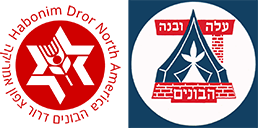BUILDING PROGRESSIVE ZI.ONIST ACTIVISTS
Exploring the Impact of Habonim Dror
A Study by Steven M. Cohen & Steven Fink, 2013
THE STUDY
From this page you can open each of the individual sections of the complete Habonim Dror Alumni Impact report by Steven M. Cohen and Steven Fink. If you prefer to open up the entire study at once in pdf format, click here.
STUDY COVER and CREDITS
Published 2013 by the Habonim Dror Camp Association Steven J. Weinberg, Executive Director
TABLE OF CONTENTS
Habonim Dror – From 1935 to Today ........2
An Anxious Time for American Jewry .........2
Can Jewish Value Education Work? ...........3
Habonim Dror: Philosophy and Program ....4
The Sample and Implications ...................5
The Analytic Strategy .............................6
READ MORE...
HABONIM DROR - FROM 1935
Founded in 1935, Habonim Dror in North America – with its network of summer camps, local programming and Israel-based activities -- has directly touched on the order of 40,000 Jewish young people.
CAN JEWISH VALUE EDUCATION WORK?
Over the last two decades a growing body of literature has documented that certain experiences in adolescence and childhood do, in fact, exert several sorts of long-term impact upon Jewish engagement in adulthood.
HABONIM DROR:
PHILOSOPHY & PROGRAM
Habonim Dror describes itself as a Progressive Zionist Youth Movement. It sees its mission as twofold (from its website https://www.habonimdror.org/): To build a personal bond and commitment
THE SAMPLE
The sample frame consisted of all 5,000 Habo alumni whose email addresses could be assembled by the Habonim Dror office. Nearly 2000 (N=1994 to be exact) eligible respondents returned the survey (a few respondents reported they had not participated in Habonim Dror in their youth, and were dropped from the analysis).
THE ANALYTIC STRATEGY
We assess the impact of Habonim Dror in two ways. First, where possible, we compare the Habos’ responses with those of (moderately) comparable samples of American Jews from other studies. If, for example, the Habonim Dror respondents far more often identify ...
DEMOGRAPHIC
CHARACTERIZATION
Among the most notable features of the sample are the following (see Appendix A for a complete frequency distribution). First, they range in age from 18 to 83, with the oldest respondent having been born in 1930. As Table 1 shows, the ages are widely distributed as follows:
HIGH LEVELS OF EXPERIENCING HABONIM
Habonim Dror offers its young people several ways to participate in its activities. Undoubtedly reflecting usage patterns generally, nearly everybody who has been involved with Habonim Dror attended or worked ...
JEWISH BACKGROUND
Habonim Dror alumni report evidence of childhood Jewish socialization somewhat more intense than that reported by American Jews generally, and on par with that reported by those who attended Jewish camps. About a third of them, in fact, attended or worked in a Jewish camp other than their Habonim
JEWISH ENGAGEMENT
The survey of Habonim Dror alumni used a number of questions whose wording exactly replicated that found in the 2011 Jewish Community Study of New York, allowing direct comparisons between results for the alumni (limited to those resident in the US,
ISRAEL ENGAGEMENT
In numerous ways, these Habonim Dror alumni display unusually high engagement with Israel. Most significant are the number who have made aliyah (a total of 23%, divided almost evenly between those who remain and those who have returned).
POLITICALLY, STRONGLY TO THE LEFT
Habonim Dror characterizes itself as politically progressive, at one point explicitly aligning with the international socialist movement. In terms of political identity and views, its alumni fall disproportionately on the left.
ON ISRAEL: VERY DOVISH HARDLY HAWKISH
On a variety of positions, the Habonim Dror alumni in this sample take positions that place them squarely on the left or dovish side of the Israeli political spectrum. Asked to choose the Israeli party with whom they most closely identify, they provided the ...
TESTIFYING TO IMPACT
Subjective claims to having been influenced by an organization or experience can frequently be discounted. However, when they come in conjunction with other powerful evidence, such testimony gains some credibility.
CAMPS IN PARTICULAR
Bogrim specifically mentioned the role, impact, and experiences that camp (as opposed to Habonim Dror) provided for them. For many bogrim, camp represented an opportunity to explore and learn about themselves.
THE HABONIM DROR FAMILY
Other evidence of impact is found in the numerous family ties among Habonim Dror alumni. One third of the alumni reported that a parent was involved with Habonim Dror, and for the older alumni...
CONCLUSIONS
The findings testify clearly to the impact of Habonim Dror upon the movement’s alumni, be they in the United States, Israel, or elsewhere. The respondents in this sample of nearly 2,000 “Habos” make very powerful claims to the impact of Habonim Dror upon their lives.
